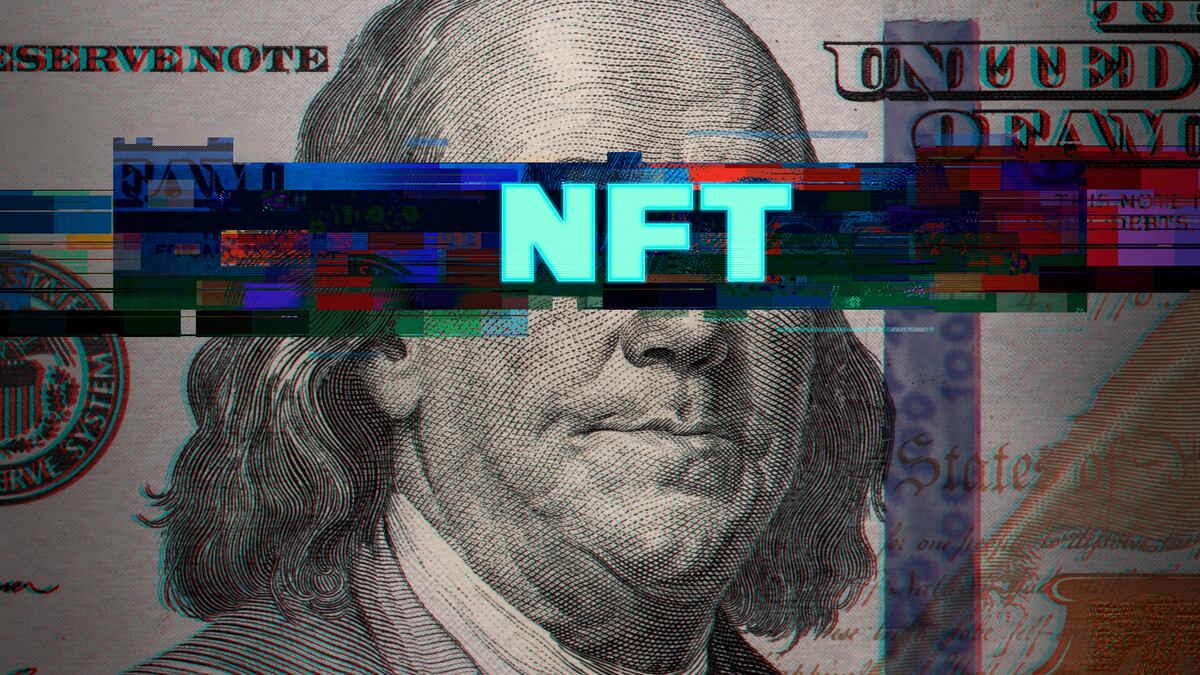Prices for many of the most well-known and valuable NFTs, dubbed “blue-chips,” have spiralled down to lows not seen since the halcyon days of 2021.
Weekly NFT sales reached a new low of around 300,000 in one week in April, down over 76% from the first half of 2022 when the number of trades frequently exceeded 1 million per week.
And the current data indicates the downward trend shows little sign of reversing.
The NFT community, once known for preaching the crypto catchphrase “we’re all gonna make it” as NFT values skyrocketed, is now rallying behind a new slogan: “we will all survive.”
“No one knows where the bottom will be,” Loopify, the pseudonymous founder of NFT game Treeverse and an active NFT investor, told DL News. “When we are in a decline, people run as fast as they can and lose conviction faster.”
With the mood souring, the NFT community has begun to sing a different tune. The overly-optimistic crypto catchphrase WAGMI — “we’re all gonna make it” — has given way to a grimmer rallying cry: “we will all survive.”
This is the message associated with this year’s Non Fungible Conference in Lisbon, according to its main organiser. Some of the biggest names in the industry, including digital artist Murat Pak, who has recently received much criticism for neglecting his NFT projects after launch, and pseudonymous collector Cozomo de’ Medici, whose identity was once claimed by Snoop Dogg, are set to speak.
NOW READ: How secretive speed-trading firms like Jump and Jane Street make a killing in crypto
Data from crypto analytics platform Nansen shows NFT trading activity on Ethereum, the most popular chain for NFTs, is at its lowest level since November 2021.
In April, weekly NFTs sales hit a new yearly low of around 300,000. This figure is down over 76% from the first half of 2022 when the number of trades frequently exceeded 1 million per week.
The so-called blue-chip NFT collections have also seen their floor prices – the lowest asking prices – plummet in tandem with falling sales.
Board Ape Yacht Club, the top-traded collection of all time, once commanded a floor price of over $350,000, as celebrities Paris Hilton, Jimmy Fallon, and Snoop Dogg among others piled into the collection.
Now the euphoria is gone, and prices of Bored Apes have steadily bled. The NFTs now sell for over 73% less than their bull market highs in dollar terms.
“The biggest problem with NFTs currently is the mindset. People are forgetting the technology and focusing on the money aspect,” Aaron Sage, a NFT writer and artist, told DL News.
In a Twitter thread, Sage lamented that the culture surrounding NFTs including Bored Ape Yacht Club had changed and would never return.
“The sense of community and happiness is gone,” he said, as he shared a recording of a lively Twitter spaces with dozens of Bored Ape holders imitating monkeys.
The downfall in the NFT market is also taking a toll on some of the biggest investors.
Tiger Global, one of OpenSea’s top investors, disclosed in December that it had marked down the NFT marketplace’s value from $13 billion at the time of its investment to just $3 billion today.
Venture investors attribute the markdown to OpenSea’s — and by extension the NFT market’s — brutal drawdown in recent months.
Several well-known figures in the NFT community have also left the space in recent weeks. Franklin Caldwell II, known online as franklinisboard, one of the biggest collectors who owned more than 60 Bored Ape NFTs at its peak, said in April that he would be stepping away from NFTs after selling a sizable portion of his collection.
“I won’t get involved in NFT trading/twitter for a while, and will just focus on my private life for the time being with my remaining apes,” he said.
NOW READ: ‘OpenSea is in big trouble’ as Tiger Global cuts valuation by 76%
But the wave of departures is not being offset by new entrants, as the data shows a multi-year low in new NFT buyers, with just 17,672 per week compared to 94,740 just over a year ago.
“A small percentage of people will stay – those with actual conviction in parts of the industry they believe in,” Loopify said.
The data also shows that there may be indeed a ray of hope for the ailing NFT market: trading volumes are still higher than their 2022 lows, which indicates that while the market itself may not be growing, those already trading NFTs, particularly high-volume traders, continue to stick around.
Loopify said that despite the current bleak outlook, the potential for the NFT market as a whole to come back is “more likely than not.”
“It will be bigger and better,” he said.


